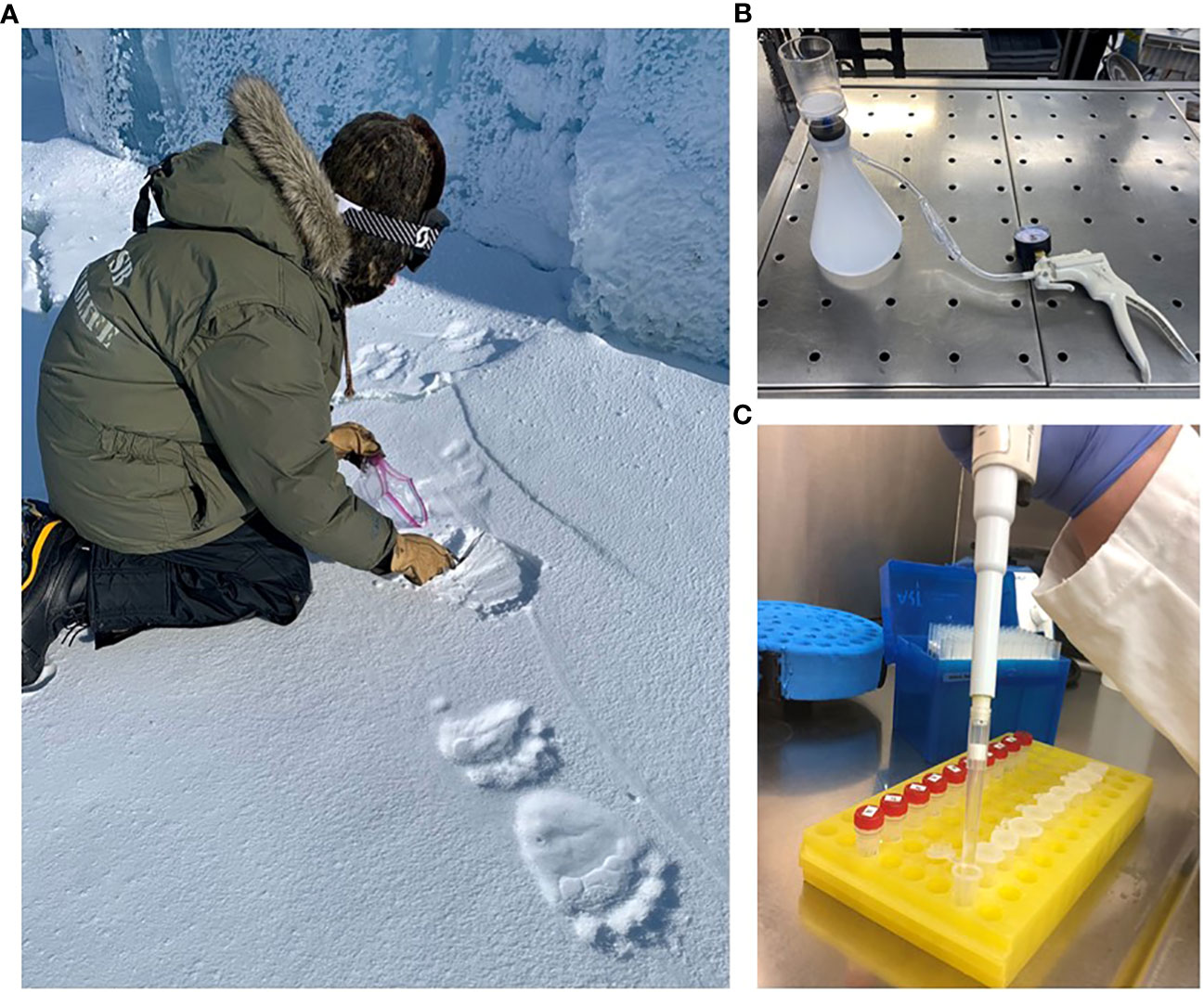Keeping track of the world’s most northerly bear species is no easy feat especially when most traditional polar bear monitoring is done using aircraft that rely on sea ice to be able to land. With declining sea ice levels in areas of polar bear populations due to the climate crisis, scientists have found a new method to be able to extract DNA from these snow giants, and it all starts with a footprint.
Taking DNA from polar bears is vital to be able to determine all sorts of characteristics like sex and identification of individuals. Usual methods of DNA extraction involve using biopsy darts delivered via helicopter. However, these methods are harder to use with declining ice levels. Instead, scientists are turning to environmental DNA (e-DNA) which is found in the skin cells left behind in the polar bear footprints and tracks across the snow.
Mitochondrial DNA can tell researchers whether polar bear DNA is present in a sample collected from the snow and then, if found to be present, nuclear DNA can reveal information about the polar bear such as the individual and their sex.
Snow was taken from 13 polar bear trails on the sea ice in the North Slope Borough of Alaska. Six of the 13 trails sampled showed genotypes for five different male bears and one female. The authors believe this to be the first time e-DNA from paw prints has been used in this way.

Collecting samples from wild polar bear pawprints and testing them in the lab.
This new method can help overcome some challenges associated with traditional methods, such as not being able to use radio collars on cubs and adult males because of physiological barriers. While the team acknowledges that the study had a relatively small sample size, they suggest that it could be particularly useful as a low-cost alternative to helicopter monitoring.
This iconic Arctic predator is listed as threatened under the US Endangered Species Act. The team hope that this method of population monitoring could be used as a future, non-invasive way of keeping track of these animals. Further, it could be used to help Indigenous communities in the Arctic who are affected by polar bear management decisions.
The paper is published in Frontiers in Conservation Science.
Source Link: Polar Bear Paw Prints Help Scientists Monitor Populations For First Time